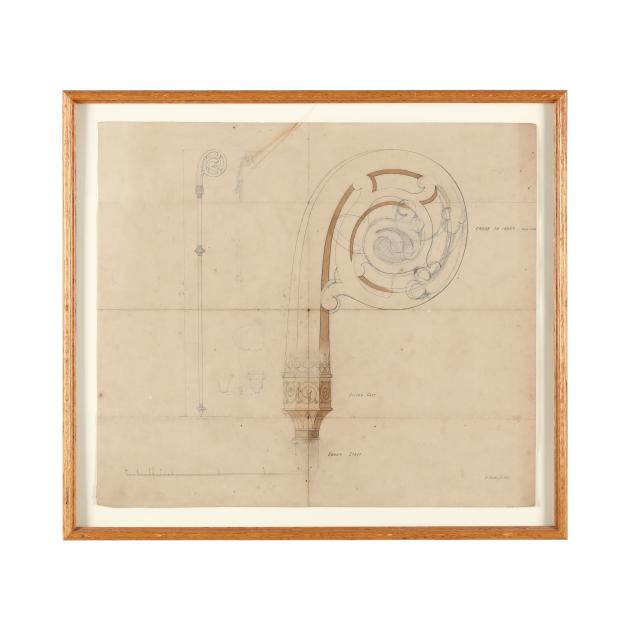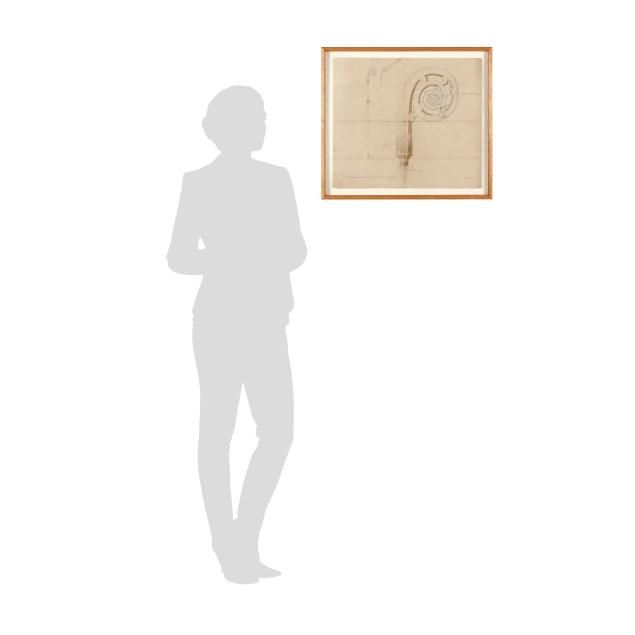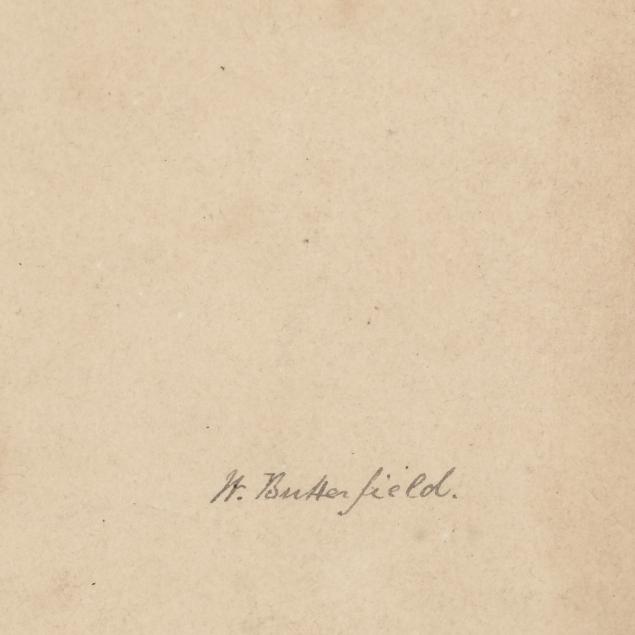
Lot 4074
William Butterfield (British, 1814-1900), Design for a Bishop's Crozier
Lot Details & Additional Photographs
Sheet size 17 x 19 1/4 in.; Frame dimensions 19 3/4 x 22 in.
Private Collection, Chapel Hill, North Carolina
Purchased from Jeremy Cooper Ltd., London
William Butterfield was an English architect renowned for his pivotal role in the Gothic Revival movement, particularly through his association with the Ecclesiological Society. Born in London, Butterfield trained as an architect in the offices of prominent Gothic Revivalists before establishing his own practice in 1840. Deeply influenced by the ideals of the Oxford Movement, which sought to restore spiritual significance to church architecture, Butterfield became a leading proponent of designing structures that combined aesthetic beauty with liturgical function. His work is characterized by a bold use of polychromatic materials, intricate detailing, and a strong adherence to medieval architectural principles.
Butterfield’s most iconic work is the design of Keble College, Oxford (1870), a striking example of Victorian Gothic architecture known for its distinctive use of red and white brick patterns. He also designed numerous churches, including All Saints, Margaret Street in London, which exemplifies his mastery of decoration and structural innovation. Beyond aesthetics, Butterfield emphasized functionality and the use of durable materials, ensuring his buildings were both beautiful and enduring. Although his designs were sometimes controversial for their unconventional color schemes, Butterfield’s legacy is firmly established as one of the most influential figures in 19th-century British architecture, blending artistic vision with religious purpose.
Toning and fold creases to sheet; scattered foxing; not examined out of the frame.






